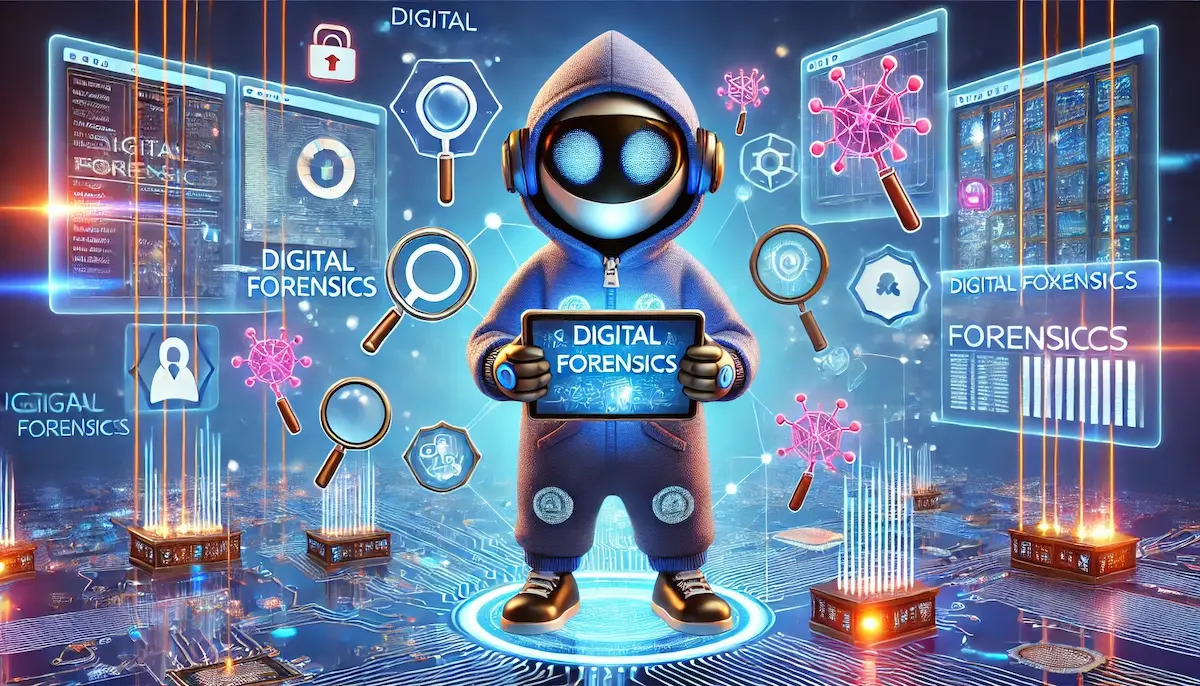Digital forensics is a branch of forensic science focused on the recovery, investigation, and analysis of digital data from electronic devices. This field plays a critical role in both criminal and civil investigations, helping to uncover evidence related to cybercrimes, data breaches, and other incidents involving digital information.
What is Digital Forensics?
Digital forensics involves the application of scientific methods to collect, preserve, analyze, and present digital evidence. It is used to investigate a wide range of incidents, including hacking, fraud, intellectual property theft, and unauthorized data access. The goal is to identify, recover, and analyze digital artifacts that can be used as evidence in legal proceedings.
Key Steps in Digital Forensics
The digital forensics process typically involves several key steps:
- Identification: Determining the scope of the investigation and identifying potential sources of digital evidence, such as computers, mobile devices, network servers, and cloud storage.
- Preservation: Ensuring that digital evidence is preserved in its original state to prevent tampering or alteration. This often involves creating a forensic image (a bit-by-bit copy) of the storage media.
- Collection: Gathering digital evidence using forensically sound methods to ensure its integrity. This can include data extraction from devices, network logs, and other digital sources.
- Analysis: Examining the collected evidence to uncover relevant information, such as files, emails, logs, and metadata. This step involves using specialized tools and techniques to interpret the data.
- Documentation: Recording the forensic process and findings in a detailed and accurate manner, ensuring that the evidence is admissible in court.
- Presentation: Presenting the findings in a clear and concise manner, often as expert testimony in legal proceedings or as reports for organizational use.
Types of Digital Forensics
Digital forensics encompasses several specialized subfields, each focusing on different aspects of digital evidence:
- Computer Forensics: Investigates data stored on computers, laptops, and other computing devices.
- Mobile Device Forensics: Focuses on recovering data from mobile phones, tablets, and other handheld devices.
- Network Forensics: Involves monitoring and analyzing network traffic to detect and investigate security incidents.
- Email Forensics: Examines email communication to uncover evidence of phishing, fraud, and other malicious activities.
- Memory Forensics: Analyzes volatile data stored in a computer’s RAM to investigate malware and other in-memory threats.
- Cloud Forensics: Deals with evidence related to cloud computing environments, including data stored and processed in the cloud.
Tools and Techniques in Digital Forensics
Digital forensics relies on a variety of tools and techniques to collect, analyze, and interpret digital evidence:
- Forensic Imaging Tools: Create exact replicas of storage media for analysis, such as FTK Imager and EnCase.
- Data Recovery Software: Recovers deleted, corrupted, or hidden data, including tools like Recuva and R-Studio.
- Log Analysis Tools: Examine logs from systems and applications to identify suspicious activities, such as Splunk and LogRhythm.
- Network Analyzers: Capture and analyze network traffic, using tools like Wireshark and tcpdump.
- Mobile Forensics Tools: Extract data from mobile devices, with popular tools including Cellebrite and Oxygen Forensic Suite.
Importance of Digital Forensics
Digital forensics is essential for several reasons:
- Crime Investigation: Provides crucial evidence in criminal cases, helping to identify perpetrators and reconstruct events.
- Cybersecurity: Assists in understanding the scope and impact of cyber incidents, aiding in the mitigation and prevention of future attacks.
- Compliance: Ensures that organizations adhere to regulatory requirements related to data protection and privacy.
- Dispute Resolution: Provides evidence in civil litigation, such as intellectual property disputes and employment cases.
- Incident Response: Helps organizations respond to security breaches by identifying compromised systems and data.
The Future of Digital Forensics
As technology continues to evolve, the field of digital forensics faces several key trends and challenges:
- Artificial Intelligence and Machine Learning: Leveraging AI and ML to automate the analysis of large volumes of digital evidence and identify patterns more efficiently.
- Cloud Computing: Addressing the challenges of collecting and analyzing evidence from cloud environments, which often involve complex multi-jurisdictional issues.
- IoT Forensics: Developing techniques to investigate data from the growing number of Internet of Things (IoT) devices.
- Encryption: Overcoming the increasing use of encryption technologies, which can hinder access to digital evidence.
- Data Privacy: Balancing the need for digital investigation with the protection of individual privacy rights and compliance with data protection regulations.
Blockfine thanks you for reading and hopes you found this article helpful.
